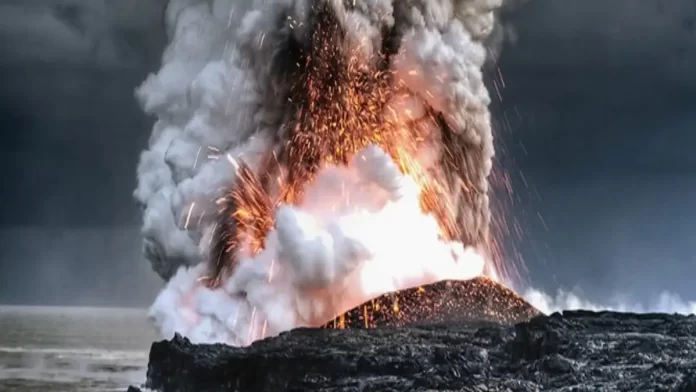A groundbreaking discovery at the Kikai Caldera near Japan’s Kyūshū island has shed light on what scientists believe to be the largest eruption ever recorded during the Holocene epoch, which began approximately 11,700 years ago and continues to the present day. Despite multiple eruptions throughout its active history, accurately gauging the magnitude of each event has presented challenges to researchers.
To unravel the mystery surrounding an eruption approximately 7,300 years ago, known as the Kikai-Akahoya (K-Ah) eruption, a team of scientists from Kobe University in Japan conducted an intricate analysis. They combined sediment samples from the seabed with advanced seismic imaging techniques to meticulously map the caldera’s shape and its contents, seeking clues of volcanic activity.
Nobukazu Seama, a geophysicist from Kobe University, highlighted the significance of their findings, stating, “Large volcanic eruptions, such as those witnessed in prehistoric times, rely heavily on sedimentary records. However, accurately estimating eruptive volumes has been challenging due to erosion and loss of volcanic ejecta on land.”
Focusing on the pyroclastic flow – the scorching mix of ash, rock, and gas – produced by the K-Ah eruption, researchers faced the daunting task of modeling this underwater phenomenon, spanning thousands of years. Nonetheless, the underwater environment proved to be an excellent preserver of volcanic debris. By employing cutting-edge instruments, the team penetrated deep below the seabed, comparing different sediment types to trace their origins and deposition.
Their findings revealed that the eruption’s fallout would have blanketed an area spanning approximately 4,500 square kilometers (1,737 square miles) – a vast expanse several times larger than major metropolitan cities such as London or Los Angeles. This colossal eruption ejected hundreds of cubic kilometers of rock and dust, surpassing any Holocene eruption previously documented. Even the historic 1883 Krakatoa eruption, heard globally, pales in comparison, scattering only a fraction of material into the stratosphere.
According to Satoshi Shimizu, a marine geophysicist at Kobe University, the study’s seismic reflection surveys and sediment analysis provided crucial insights into the distribution, volume, and transport mechanisms of volcanic ejecta.
This groundbreaking research not only enhances our understanding of past volcanic events but also holds implications for future volcano modeling. By comprehending the dynamics of ancient eruptions, scientists can refine predictive models to better anticipate and mitigate the impact of future volcanic activity.
Despite the rarity of super-eruptions in modern times, the potential devastation they pose underscores the importance of preparedness. As Seama emphasizes, “Giant caldera eruptions have profound implications for geoscience, shaping global climate and human history. Understanding this phenomenon is of paramount importance.”



